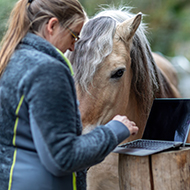Study identifies gingivitis risk factors for cats
Cats with orange coats were found to be more at risk of gingivitis.
A new study has identified factors that increase the risk of pet cats developing gingivitis.
The research looked at data from owner-completed questionnaires and veterinary surgeon-completed oral health scores for 860 cats aged up to six years. All of the cats were enrolled in the Bristol Cats Study, a longitudinal study run by the University of Bristol.
Focusing on cats aged three to four years old, the researchers found that the odds of a cat having gingivitis were higher when fed a wet only or mixed wet diet compared to cats fed a dry diet only.
The data also showed that cats not reported to hunt prey were more likely to have the condition, as were cats with variants of orange in their coat and cats which were reported to dribble whilst being stroked when they were six months old. The sex of the cats was not found to be a risk factor.
The study also found that the prevalence of gingivitis increased with age. While it was found in 24.5 per cent of cats less than 12 months old, 56.3 of cats aged between five and six years old had gingivitis.
The researchers hope the findings will help veterinary surgeons to identify cats at greater risk of gingivitis, allowing them to advise owners about preventative measures.
Jess Williams, lead author of the study, said: “Periodontal disease is one of the most common conditions in cats, potentially causing issues with eating and behaviours like grooming.
“Our study showed that even young cats may have signs of gingivitis, so it is important to discuss and monitor dental health regularly and early on in a cat’s life, especially for those cats who may be more at risk.”
The study, which was funded by BSAVA PetSavers, has been published in the Journal of Small Animal Practice.
Image © Shutterstock



 With Strangles Awareness Week just around the corner (5-11 May), vets are being encouraged to share a survey about the disease with their horse-owning clients.
With Strangles Awareness Week just around the corner (5-11 May), vets are being encouraged to share a survey about the disease with their horse-owning clients.